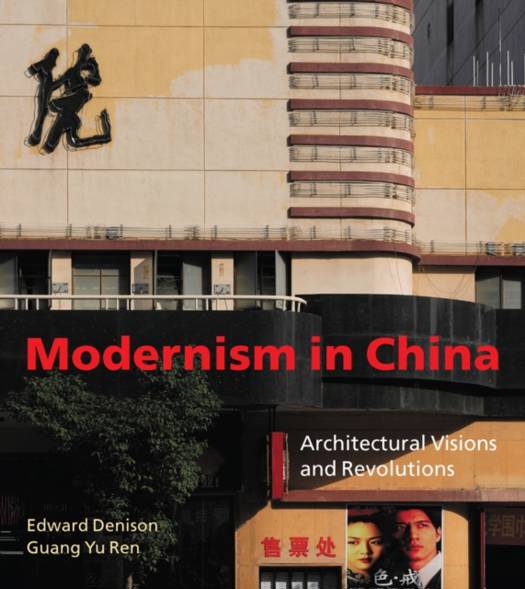
Door een staking bij bpost kan je online bestelling op dit moment iets langer onderweg zijn dan voorzien. Dringend iets nodig? Onze winkels ontvangen jou met open armen!
- Afhalen na 1 uur in een winkel met voorraad
- Gratis thuislevering in België vanaf € 30
- Ruim aanbod met 7 miljoen producten
Door een staking bij bpost kan je online bestelling op dit moment iets langer onderweg zijn dan voorzien. Dringend iets nodig? Onze winkels ontvangen jou met open armen!
- Afhalen na 1 uur in een winkel met voorraad
- Gratis thuislevering in België vanaf € 30
- Ruim aanbod met 7 miljoen producten
Zoeken
Modernism in China
Architectural Visions and Revolutions
Edward Denison, Guang Yu Ren
Hardcover | Engels
€ 69,95
+ 139 punten
Omschrijving
With nearly five millennia of architectural heritage, China boasts the longest continuous architectural lineage in history. A hundred years after the dawn of the 20th century, the urban landscape of the world's most populous country has now been transformed completely. The pivotal link between the ancient traditions of China's imperial past and the high-rise, glass-clad, lust-for-wealth that characterises China's 21st-century architectural aspirations is a period of modernisation that revolutionised its architectural language and urban fabric.
Despite the fact that the reach of Modernism was as effective in early 20th-century China as elsewhere in the world, China remains conspicuously absent from written histories of Modernism - as Modernism does from written histories of China. Modernism in China confronts this by investigating China's unique experience of Modernism, its remarkable variety, striking contradictions and recurrent paradoxes. Modernism in China acquired its own unique language forged from geographical, cultural, historical and political circumstances. This extensive study analyses, for the first time, the role of Modernism in the development of China's architectural and urban landscapes throughout the 20th century and, consequently, offers valuable context to the country's recent resurgence.
Despite the fact that the reach of Modernism was as effective in early 20th-century China as elsewhere in the world, China remains conspicuously absent from written histories of Modernism - as Modernism does from written histories of China. Modernism in China confronts this by investigating China's unique experience of Modernism, its remarkable variety, striking contradictions and recurrent paradoxes. Modernism in China acquired its own unique language forged from geographical, cultural, historical and political circumstances. This extensive study analyses, for the first time, the role of Modernism in the development of China's architectural and urban landscapes throughout the 20th century and, consequently, offers valuable context to the country's recent resurgence.
Specificaties
Betrokkenen
- Auteur(s):
- Uitgeverij:
Inhoud
- Aantal bladzijden:
- 336
- Taal:
- Engels
Eigenschappen
- Productcode (EAN):
- 9780470319284
- Verschijningsdatum:
- 1/07/2008
- Uitvoering:
- Hardcover
- Formaat:
- Genaaid
- Afmetingen:
- 234 mm x 259 mm
- Gewicht:
- 1564 g

Alleen bij Standaard Boekhandel
+ 139 punten op je klantenkaart van Standaard Boekhandel
Beoordelingen
We publiceren alleen reviews die voldoen aan de voorwaarden voor reviews. Bekijk onze voorwaarden voor reviews.











